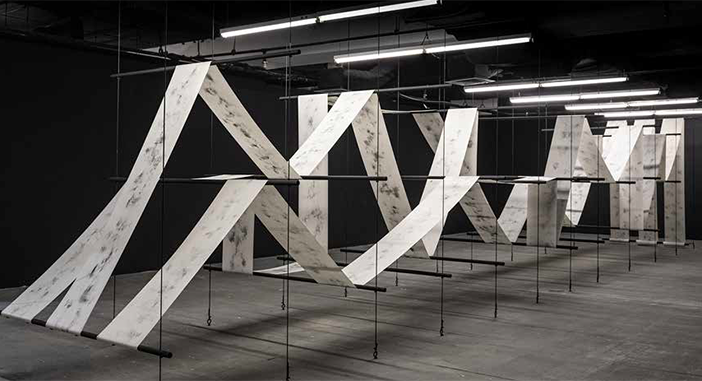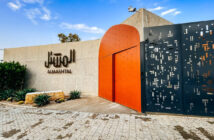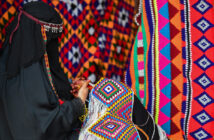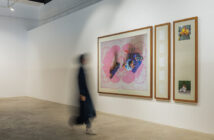BY JOU PABALATE
A dispatch on the Riyadh based contemporary artists that have made quite a distinct buzz on our radar — setting the tone for concept-driven aesthetics that leave audiences provoked, if not transformed.
 Nojoud AlSudairi
Nojoud AlSudairi
Riyadh-based architect and artist Nojoud AlSudairi has been creating artistic expressions through the art of weaving, exploring the use of various textiles and allowing each piece to take a life of its own. Her work also covers the touchpoints between urban progress and nature in a way that reveals contemporary culture. She was a resident of the coveted Delfina Foundation program back in 2017. AlSudairi also runs an architectural firm, where she further pursues material exploration and conscious design.
AlSudairi recently took part in the “I Love You Urgently” exhibition 21’39 in Jeddah, where she showcased a two-part piece entitled, Compositions of volatility I & II. The artwork, consisting of a hanging tapestry that mimics the topology of a Wadi and a map-like carpet encourages the audience to contemplate how urban master planning and expansion projects in the city impact the ecological state of Riyadh’s natural environment. It challenges us to ask questions we may have set aside ourselves— how can we find the balance between conservation and development? Ecology and Economy? What pays the price for progress?
AlSudairi also draws inspiration from her identity and her historical and cultural situatedness. Learned narratives and poems from her grandfather and found objects in her grandmother’s home find refuge and rebirth through some of her works.
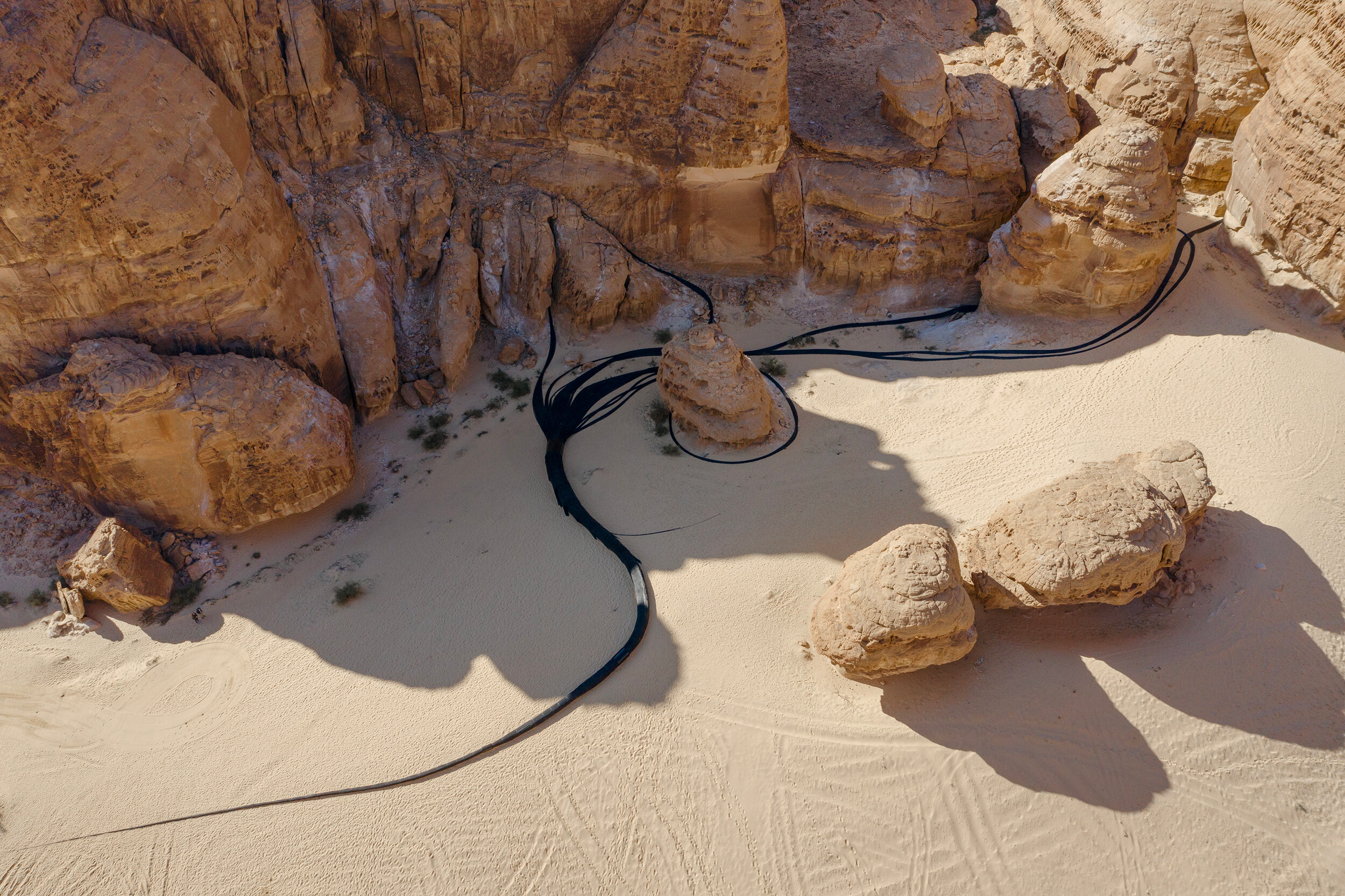 Muhannad Shono
Muhannad Shono
Muhannad Shono is a contemporary artist whose works are marked by a thoroughly crafted concept. They often take audiences on a journey, packaged in narratives that tackle themes of identity, belonging, language, semantics, freedoms, and such. Some of his installations take on a phantasmic quality, challenging participants to imagine or investigate preconceived notions and predispositions.
His artistry is heavily influenced by his childhood in then, more restrictive Riyadh, where he was taught to draw a line through the necks of characters and black markers were used to cover images deemed offensive or provocative. Today, one would see how his artform shows a penchant for exploring the power of the line, no longer to restrict or destroy, but rather to create. Likewise, the use of black ink and mediums are prominent in his work.
Shono’s showcasing at Desert x Al Ula this year was quite the behemoth of a work. Lost Path is a massive site-specific installation using plastic PVC pipes bound together, which from afar seem to have spawned out of nowhere and sprawled over the destination’s landscape. The singular line formed by the pipes piques a visitor’s curiosity, urging them to follow where it leads and diverges into several streams— ink-like brush strokes on the sand. The Lost Path pulls you to partake in a playful adventure of sorts, centered more so on self-discovery and abandonment of expectations. Breathing new life and take on one’s journey being more important than the destination.
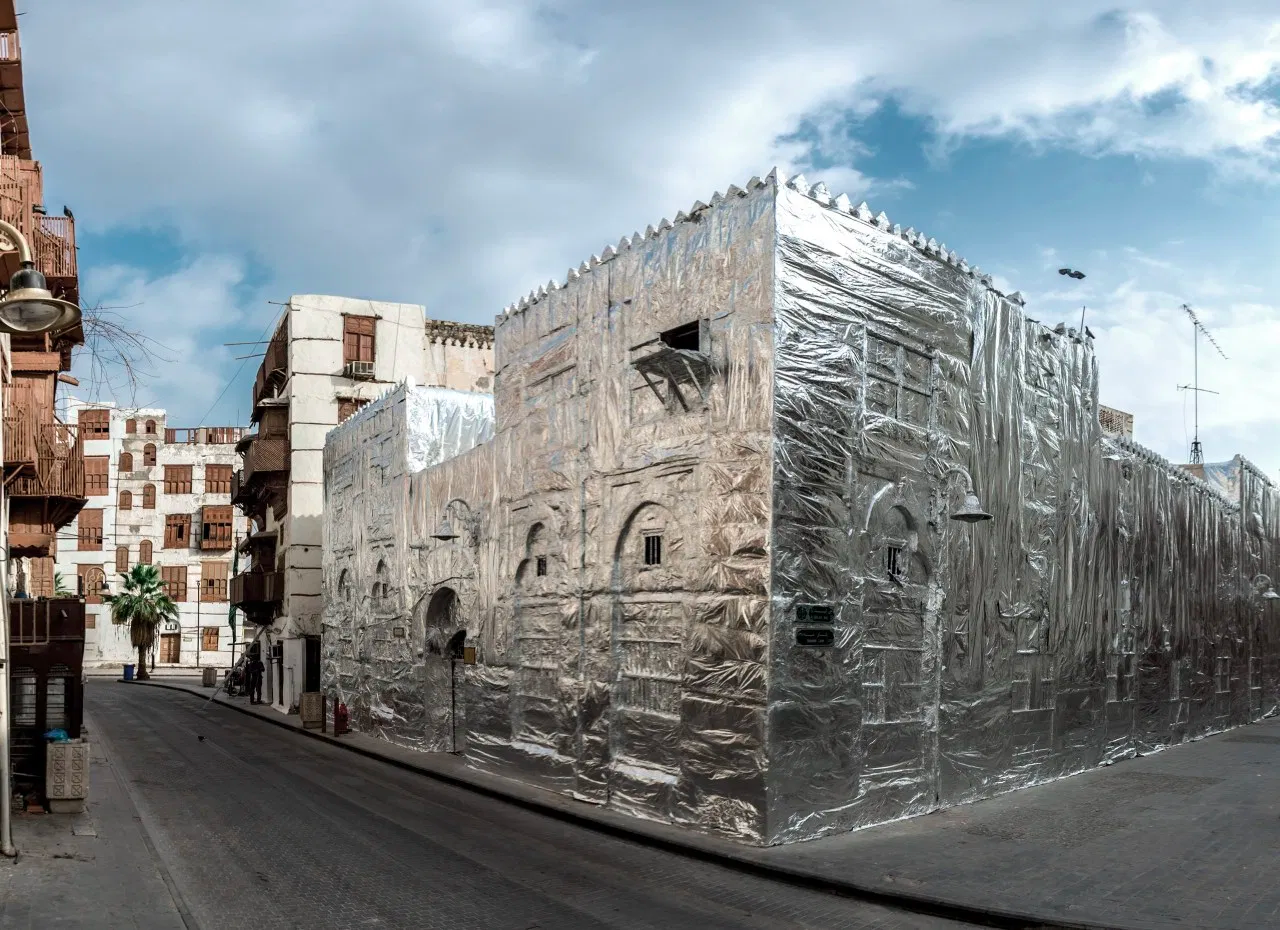 Abdullah Othman
Abdullah Othman
From his early days of “Jumping off a Pepsi” Can and invoking “The Question”, Abdullah Othman’s art form has evolved and scaled in ways that astound while retaining its conceptual depth.
His artistic philosophy is resonant of Marcel Duchamp, “Art is Life”, he claims, going through cycles and delving into the core of a place, space, and condition. His art often deep dives into a question in search of more questions, more so than answers.
His installations intervene or superimpose on its immediate reality, driving its audience to take pause: whether through performance like “No-Touch Torture” where the artist listened continuously to torture recordings from Guantanamo Bay and Abu Ghraib prisons while enclosed in a transparent box; or by wrapping an entire building in tin foil.
The latter, entitled Suspended was a public art installation done Al-Khunji Al-Kabir in the historical district of AlBalad, Jeddah. The art piece had an illusionary quality to it, oftentimes catching first-time on-lookers off guard with its symbolic gesture of a frozen state. This is Othman’s commentary on the absurdity of thinking change and its cycle can be placed on hold.

